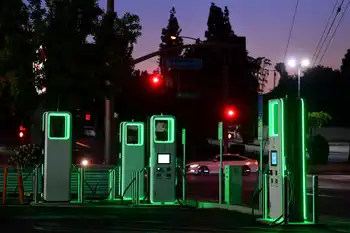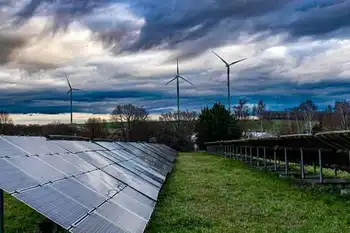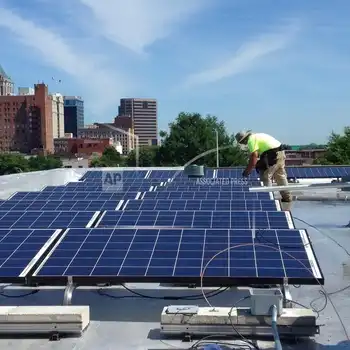Will EV Supply Miss the Demand Mark in the Short and Medium Term?

Protective Relay Training - Basic
Our customized live online or in‑person group training can be delivered to your staff at your location.

- Live Online
- 12 hours Instructor-led
- Group Training Available
EV Carpocalypse signals potential mismatch between electric vehicle production and demand, as charging infrastructure, utility coordination, and plug-in hybrid strategies lag forecasts, while state mandates and market-share plays drive cautious, data-informed scaling.
Key Points
EV Carpocalypse describes overbuilt EV supply versus demand amid charging rollout, mandates, and risk-managed scaling.
✅ Forecasts vs actual EV demand may diverge in near term
✅ Charging infrastructure and utilities lag vehicle output
✅ Mandates and PHEVs cushion adoption while data guides scaling
According to Forbes contributor David Kiley, and Wards Automotive columnist John McElroy, there may be an impending “carpocalypse” of electric vehicles on the way. Sounds very damning and it’s certainly not the upbeat tone I’ve taken on nearly every piece of EV demand content I’ve authored but the author, Kiley does bring up some interesting points worth considering. EV Adoption is happening, and it’s certainly doing so at ever faster rates as the market nears an EV inflection point today. The infrastructure (charging stations, utility cooperation) is being built out more slowly than vehicle manufacturers are producing cars but, as the GM president on EV hurdles has noted, the issue seems to be just that, maybe even the short and medium term plans for EV manufacturing are too aggressive.
#google#
With new EV and plug-in hybrid vehicle sales representing a mere .6% of new car cales in the US, a sign that EV sales remain behind gas cars even as new models proliferate, car makers are are going to be spending more than $100 billion to come out with more than a hundred models of battery electric vheicles which also includes PHEVs and the fear is these vehicles aren’t going to sell in the numbers that automakers and industry analysts may have expected. But forecasts are just that, forecasts, even as U.S. EV sales surge into 2024 suggest momentum. So there’s a valid argument to be made that they’ll either overshoot the true mark or come in way below the actual amount. With nine U.S. states mandating that 15% of new cars sold be EVs by 2025, you could say that at least automakers have supporters in state government helping to push the new technology into the hands of more drivers.
Still, it’s anyone’s guess as to what true adoption will be, and a brief Q1 2024 market share dip underscores lingering volatility. The use of big data and just in time manufacturing will ensure that manufacturers will miss the mark on EVs by less than they have in the past, and will able to cope with breaking even on these vehicles for the sake of gobbling up precious early stage market share. After all, many vendors have up to this point been very willing to break even or make a loss on their lease-only EVs or on EV or hybrid financing in order to gain that share and build out their brand awareness and technical prowess. With some stops and starts, demand will meet supply or supply may need to meet demand but either way, the EV adoption wave is coming to a driveway near you.











